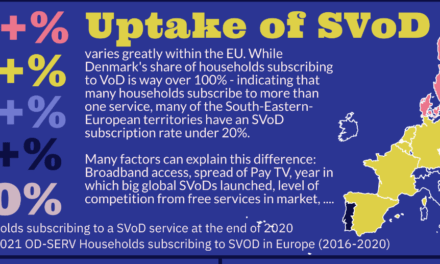I’m in Colombia, doing some research on a plaque unveiled by Prince Charles in Cartagena two years ago that briefly commemorated a British fleet trying to starve the inhabitants into submission and make the United Kingdom an occupying power in South America. The plaque lasted just a few hours before being “transformed” by an activist engineer, then removed by the municipal government, following mass Twitter protests. Score one against idiotic imperialism’s representatives in the British “Constitution.” I’m doing this research with Anamaria Tamayo Duque, back in London.
The second issue I’m examining, with Olga Lucia Sorzano (also in London), is child sexual exploitation in Cartagena, which is arguably the world’s second leading center of such awful things after Bangkok. Finally, I’m undertaking other work in Barranquilla with various colleagues from the Universidad del Norte’s Comunicación Social y Periodismo formation, notably Jesús Arroyave and Marta Milena Barrios.
This trip means immersion in a different kind of television from the Anglo world, though linked to it. So whereas Donald Trump, death in Jordan, Brexit bigotry, and Sydney storms dominate the Anglo media, here the big story is the Peruvian election, where we draw deep breaths as it seems that, like Austria, Perú has stopped short of returning to a dark history of populist authoritarianism; and football. La Copa América, akin to the Euros, is on now in the US, and coverage is wall-to-wall of this centenary event across the region.
As always, when outside the US in particular, I am struck by how good CNN can be when it isn’t caught up in guiding businesspeople towards money or avowing that the US must eschew leftist populism. Consider the even-handed way that CNN en Español treated the 2012 Karina Bolaños sex scandal in Costa Rica, which gained little attention in English but saw the downfall of a government minister for being clandestinely recorded in sensible underwear while talking somewhat coquettishly with her boyfriend on line.
On the few occasions I appeared on CNN while resident in the US, I was struck that the journalists in its studios were watching the network’s international feeds, for all the world as if they knew how trivial were their topics and how shallow their reporting.
But this is not to say that things are all wonderfully rosy in this part of the Global South. Colombian TV is dominated by an oligopoly, which is the norm in most media systems where commercial firms proliferate. That is especially true of Latin America.
This matters a great deal in a place where television is important. Advertising investment continues to increase; governments still use TV to promote generalized propaganda as well as their daily agendas; [1]In Mexico, expenditure on propaganda in fiction, what we might call “political placement,” exceeded US$205 million in 2012—much more than parties spent on formal campaign advertising. football on screen remains wildly popular; and drama, most notably telenovelas, dominates prime time and draws large audiences aged between 25 and 60. While younger viewers watch television on a wider variety of screens and technologies, and do so at differing times, the discourse of TV remains an important referent in their audiovisual experiences.
In addition, across age groups, divides persist between a minority with routine high-quality access to the digital world of technology and information and a majority without alternatives to the traditional audiovisual sphere, for whom cell phones, for instance, are at most devices for communicating with friends and family members. For example, the average Peruvian spends nine hours a day in front of various screens enjoying a variety of formats. In Brazil, the figure is eight hours, and seven in Mexico.
As in many other places, distinctions between the use of various screens and services (free, subscription, broadcast, video on demand, computers, smart TVs, and other digital devices) are not hard and fast. Rather, there is a flow across the categories, with differences established as social practices rather than technological essences. The latest data also confirm that Latin Americans watch TV in this broad sense with others—that the norm is collective viewing, across genres and media, due in part to the need to share resources in a zone where wealth is so unevenly skewed. This adds to the cultural embeddedness of the medium and its orality.
Speaking of orality, the newspaper El Tiempo offers this clip of what it calls ‘Europeans,’ which seems to mean light-skinned native English speakers from North America, endeavoring to pronounce the names of notable Colombian football clubs and players. So far, La Copa’s Gringo hosts have distinguished themselves by failing to get little details such as flags and national anthems correct [2]Thanks to Jorge Saavedra for drawing my attention to this fact.—and losing the opening fixture to Colombia.
Note: Parts of this column draw on work I’ve done with Guillermo Orozco
Toby Miller is Emeritus Distinguished Professor at the University of California, Riverside, the Sir Walter Murdoch Professor of Cultural Policy Studies at Murdoch University, Profesor Invitado at the Universidad del Norte, Professor of Journalism, Media and Cultural Studies at Cardiff University/Prifysgol Caerdydd and Director of the Institute for Media & Creative Industries at Loughborough University in London. He can be contacted at tobym69@icloud.com and his adventures scrutinized at www.tobymiller.org.
References
| ↑1 | In Mexico, expenditure on propaganda in fiction, what we might call “political placement,” exceeded US$205 million in 2012—much more than parties spent on formal campaign advertising. |
|---|---|
| ↑2 | Thanks to Jorge Saavedra for drawing my attention to this fact. |




